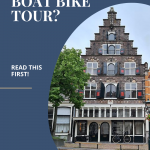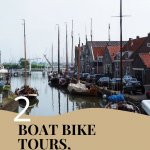Two Boat Bike Tours, compared
A couple of years ago I wrote a review of a Boat Bike Tour I took here in the Netherlands: one that specifically focused on Hanseatic cities. On almost all points it was an excellent review. I enjoyed the trip tremendously and found it surprising that more people aren’t going for this great combination of an active vacation – bicycling every day – and the ease of a floating hotel.
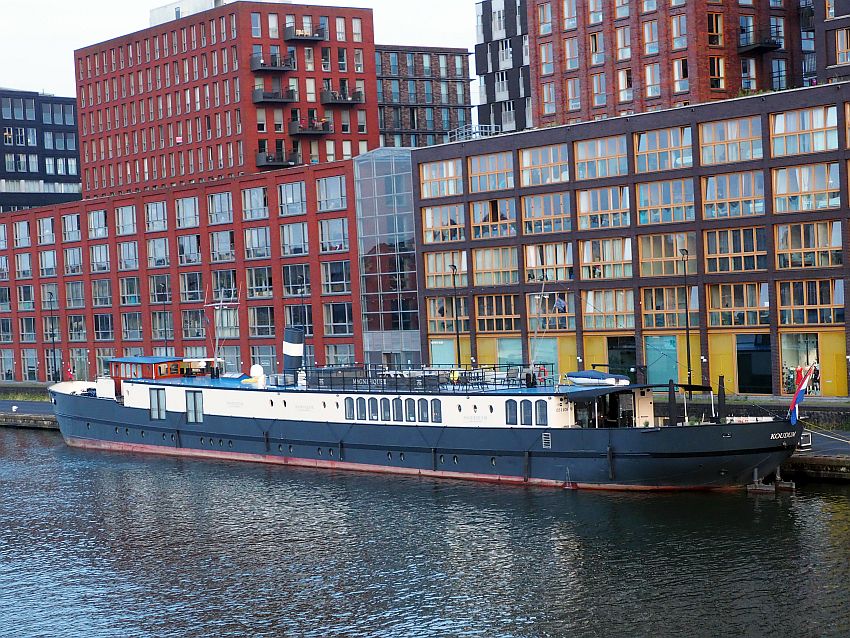
Well, recently I took another one of Boat Bike Tours’ trips, so this article will be somewhat shorter, just looking at the differences between the two tours. I’ll also include some tips for if you decide to take a Boat Bike Tour.
But first, a disclosure
For full transparency, I have to explain my relationship to Boat Bike Tours, which has changed in the two years since I wrote the first review. At that time, the article was sponsored: I received the tour for free in exchange for writing an honest review.
About six months ago, I received a message from Boat Bike Tours telling me that their English-language copywriter was going on maternity leave. They asked if I’d be interested in applying to do some freelance copywriting for them. I was, and I did, and I was accepted. So ever since then I’ve been doing occasional work for them. I write articles for their site, translate texts from Dutch or German, write social media messages and so on.
One of the perks, apparently, of working for Boat Bike Tours is that I get a free trip. So that’s what this second trip was. I paid nothing except my drinks, and even received my ebike rental for free. My husband, Albert, came along and we paid for him, but at a deep discount.
All during the trip I posted about it on social media and marked it as #sponsored. Technically speaking, though, it isn’t. I have no obligation to write anything about the tour. I’m writing anyway because I’m a travel blogger, and this is travel: my first travel in many months. I enjoyed myself and also feel like such a good product deserves a bit of promotion.
So now that you know the whole situation, I can get on with the review.
I should also add that this article contains affiliate links. If you click on one and make a purchase, I will receive a small commission. This will not affect your price.
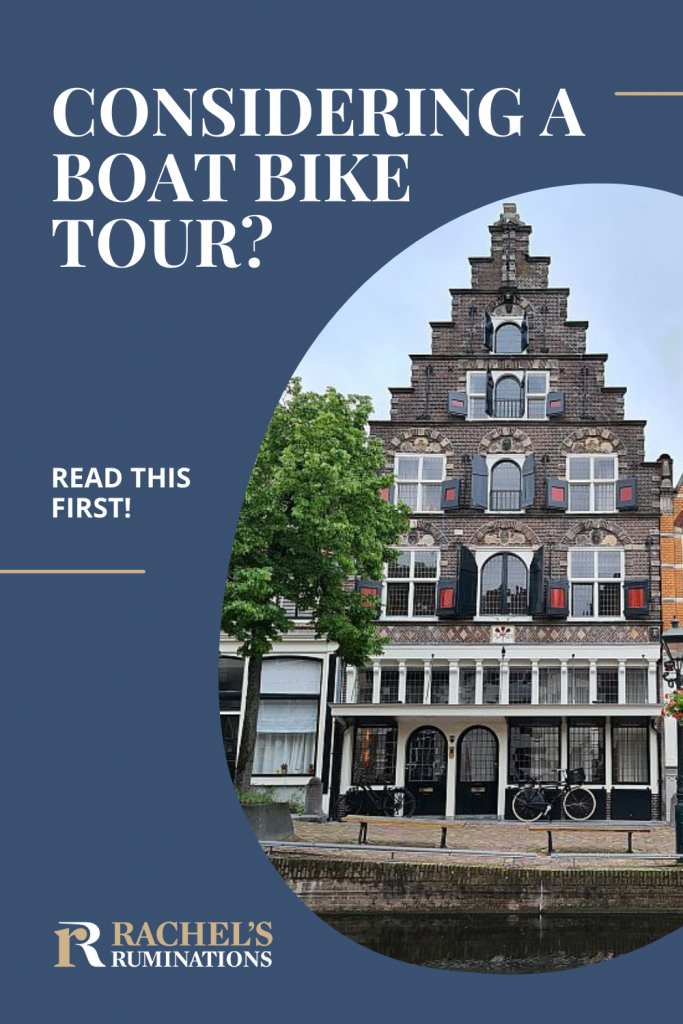
The route
The first tour I took back in 2019, the Hansa Highlights tour, covered the approximate middle of the Netherlands, stopping at a series of lovely little former Hanseatic cities. As a history geek, the concept spoke to me.
These are not very well-known places, but each one was lovely in its own way. The routes we bicycled passed through all sorts of picturesque villages, farmland, nature reserves and so on. You can read all about it in my review.
The tour I took recently is called, rather unimaginatively, Northern Tour of Holland. It covers some of the prettiest places in the province of North Holland, north of Amsterdam, but also crosses the Wadden Sea to the island of Texel and crosses the IJsselmeer (Lake IJssel) to Friesland for a day.
Day 1
The first day was just about checking in in Amsterdam and sailing the short distance to Zaandam.
Day 2
The highlight of day 2 was a visit to Zaanse Schans, an open-air museum of sorts. It has a collection of windmills of various sorts as well as some other historical buildings. You can read more about Zaanse Schans here. Since I’d been to Zaanse Schans before, I instead visited the Zaans Museum, right at the entrance to Zaanse Schans. It’s an excellent and interactive museum about the history and economy of the region.
Day 3
On Day 3 we bicycled through a national reserve that’s primarily forests and dunes, or rather forests on dunes. That meant there were actual hills: small ones, but still a bit of a novelty for us. We also visited Alkmaar, an absolutely charming city.
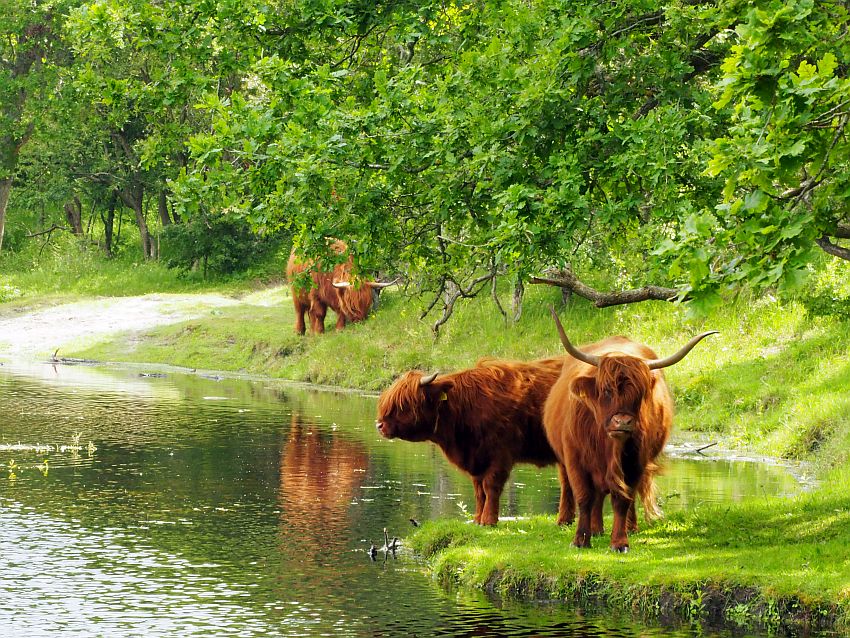
Day 4
Next we sailed to Den Helder, where we took our bikes onto the 20-minute ferry to the Wadden Sea island of Texel. Bicycling on the island was again a dune landscape, but this time with ocean views. Albert and I also visited Ecomare, a nature museum and seal sanctuary.
At the end of the day, we passed through a lock in the Afsluitdijk – a 32-kilometer (20-mile) long dike – into the IJsselmeer, and anchored somewhere on the water. The IJsselmeer is a large lake that used to be part of the Wadden Sea. It became a freshwater lake with the completion of the Afsluitdijk across its top, blocking the sea from entering anymore. The Afsluitdijk helps protect the country from floods.
Standing at anchor in the middle of the lake meant a glorious sunset and a quiet night’s sleep, with just the sound of the water lapping at the sides of the ship.
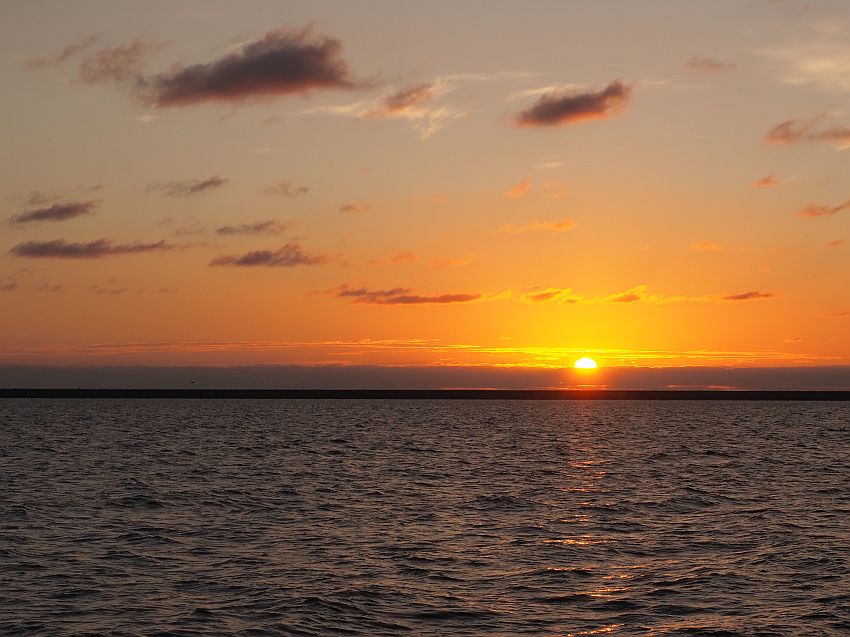
Day 5
In the morning we continued the journey across the lake to the province of Friesland, where we bicycled through some lovely little towns. I got to see the Jopie Huisman Museum in Workum – he was a brilliant painter – and the Skating Museum in Hindeloopen – the Frisians love skating. The countryside of Friesland is flat and green and breathtakingly beautiful.
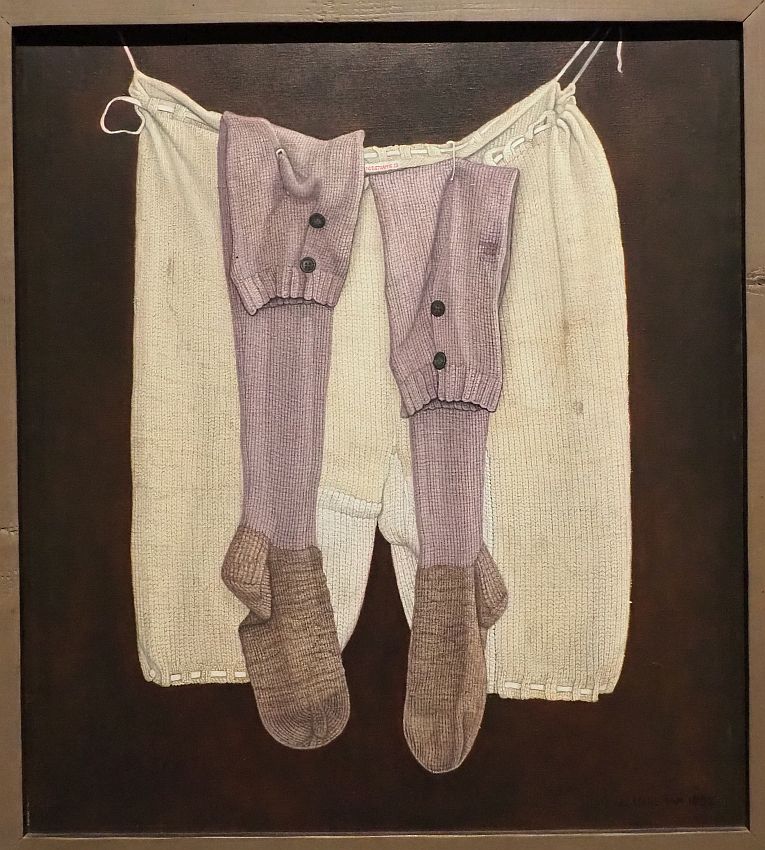
Day 6
Again we crossed the lake, this time to Medemblik. The highlight of today’s ride was Enkhuizen, which has an excellent open-air museum called the Zuiderzee Museum. Zuiderzee (Southern Sea) is what the IJsselmeer used to be called. The museum looks at the fishing villages all around the old Zuiderzee and the way of life there that disappeared with the construction of the Afsluitdijk.
The many buildings at the Zuiderzee Museum are original, brought to this place from all around the former Zuiderzee. Craftsmen demonstrate their crafts, kids can play traditional games, and so on. I had been there before many years ago with my children, but could enjoy much more of it now on my own.
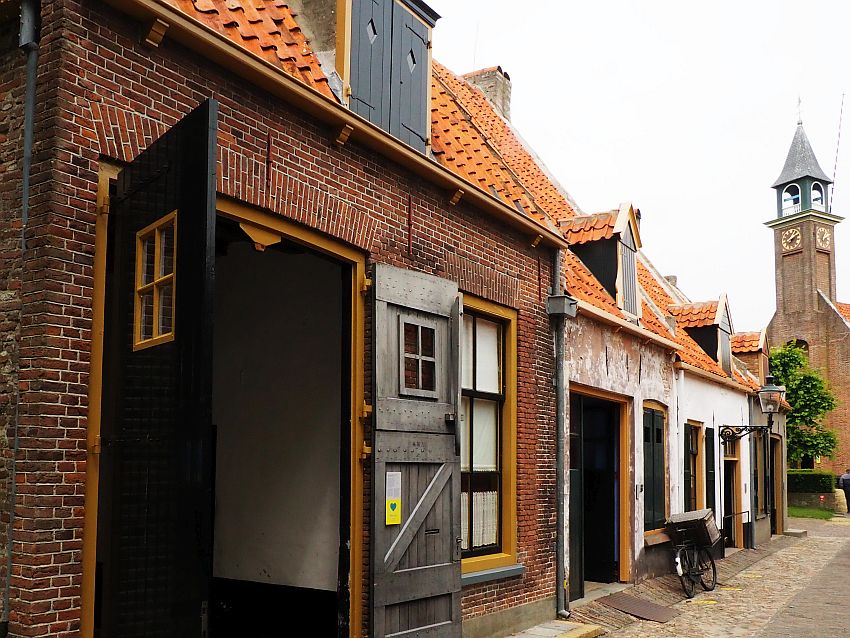
Day 7
Early in the morning before most of the guests were awake, the ship passed through a lock, something we did a number of times on this trip. This lock, though, was unusual: it was on a viaduct over a street. I would love to know how the decision got made to put a waterway through a lock over a road!
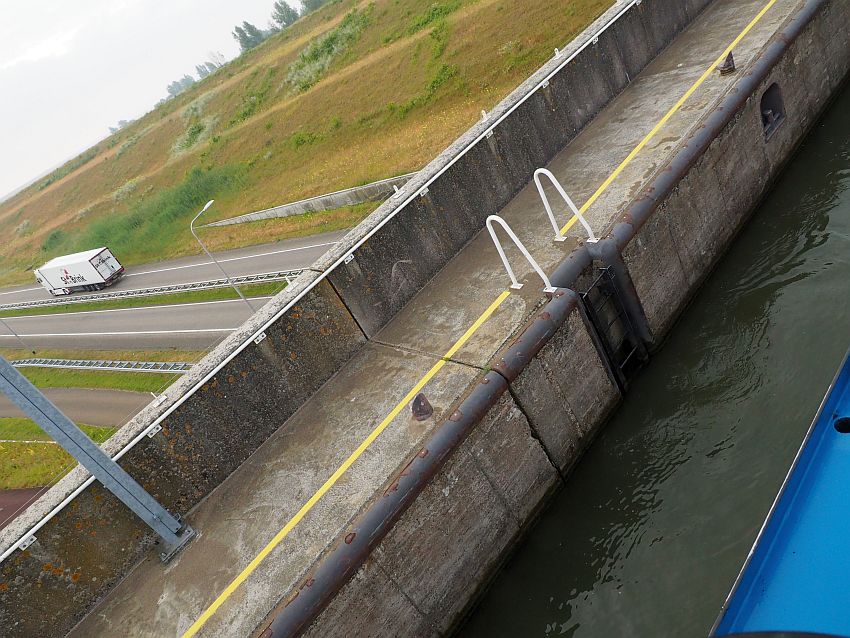
Today’s ride took us through a pretty area called Waterland, which is an apt name because of the little canals and lakes and so on. We finished our ride in Amsterdam, but had time for a bit of sightseeing in the afternoon. Check-out was the following morning.
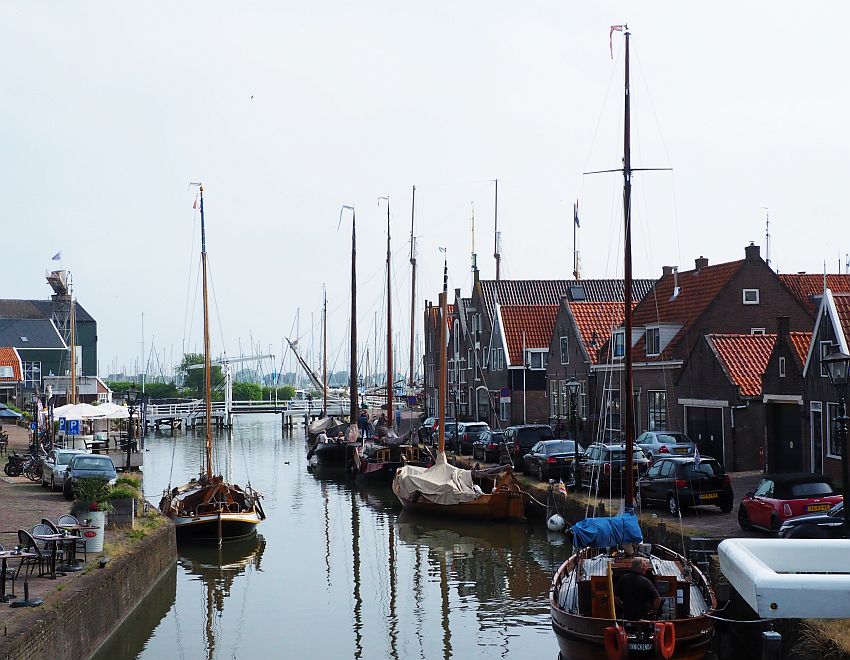
A short comparison of the Northern tour and the Hansa Highlights tour
There’s not really a way for me to compare this route with the Hanseatic cities route; they’re both pretty and varied and interesting, as I suppose all of the company’s routes are.
The northern route includes two days of dune landscapes. That means we bicycled actual hills – if rather small hills compared to pretty much anywhere else in the world. By contrast, the Hansa Highlights tour’s only “hills” were dikes, where we’d have a short slope to climb to the path that runs along the top of the dike.
Both tours include pretty towns and villages. The Hanseatic route focuses more on towns and farmland, while the northern route includes somewhat more time in nature reserves.
Since both of these tours start and end in Amsterdam, it’s easy to add days before or after your trip to see the city. (Use the map below to find your accommodations!)
Both tours demonstrate the care that goes into choosing the routes for the pleasure of the cyclists, generally avoiding heavily-trafficked routes, favoring bike routes away from roads, and including routes that pass through pretty places. The last ride of both tours, coming back into Amsterdam, even almost completely managed to avoid the craziness of the bike traffic in the middle of the city.
What I like about both these tours is that, even for someone like me, who’s lived in the Netherlands for more than 20 years, they took me places I had never been, and probably wouldn’t have ever seen. I can imagine that for a visitor from pretty much anywhere else, these routes must include a lot of “wow-moments” of gorgeous views and charming towns.
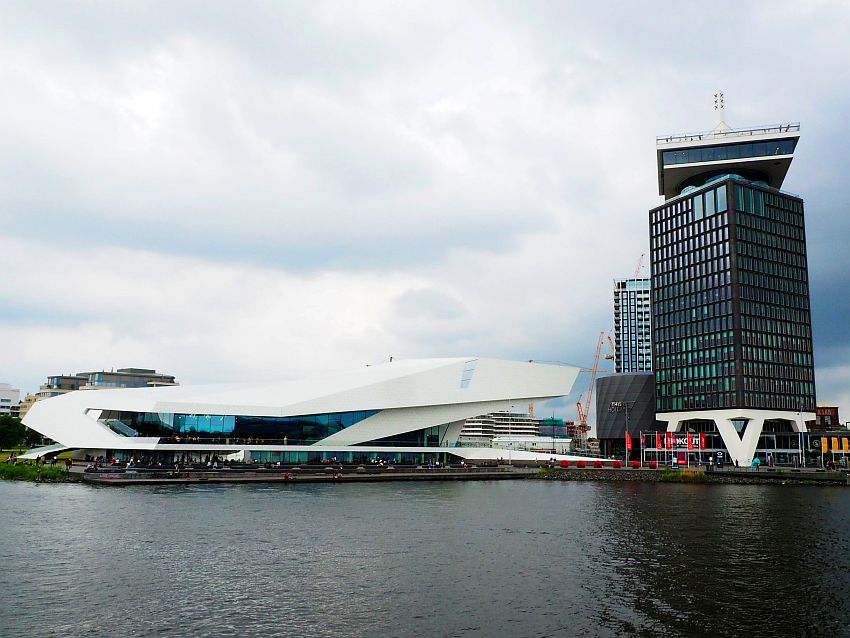
The ships
The Hansa Highlights tour I took used the boat the Nassau. Converted from a cargo barge like many of the boats the company uses, it is pleasant and cozy, with a sundeck for enjoying the fresh air on clear days. Its capacity is 68 passengers plus 12 crew.
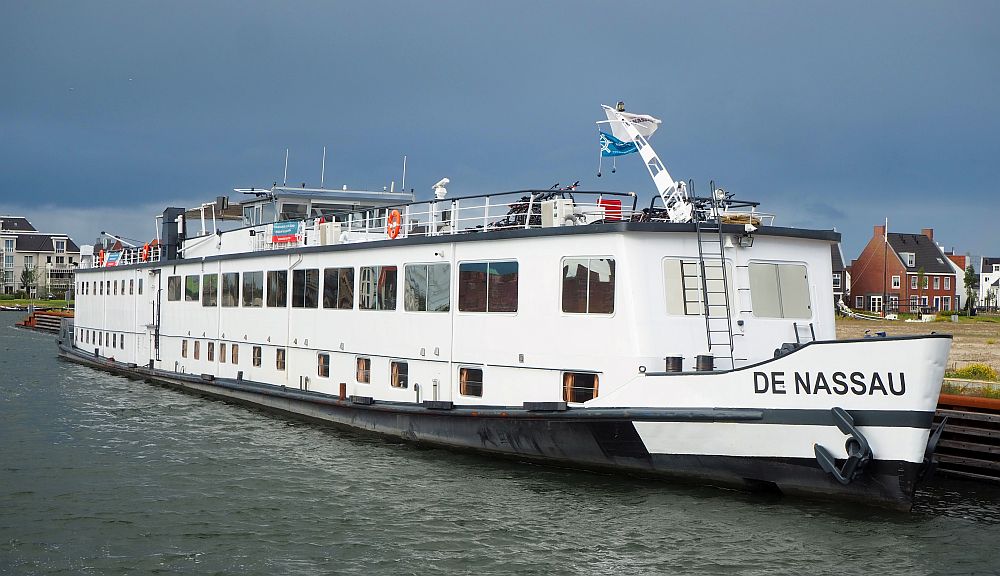
The Northern Tour usually uses a similar boat, the Willemstad (up to 96 passengers) or the Holland (up to 71 passengers).
This time, though, I was lucky. I signed up for the tour expecting something much like the Nassau. My only negative comment about the Nassau was that the cabins were too small for two people who are not intimate. I was traveling with a friend on that trip, after all, not my husband. I wasn’t concerned this time, since I’d be traveling with my husband.
But this was one of the first post-pandemic trips that Boat Bike Tours ran this year, and they didn’t have a lot of passengers lined up. Instead of one of the usual boats, they substituted the Magnifique III, a distinctly more upscale ship. This meant that we got an automatic upgrade to their “premium” category. And even this smaller boat wasn’t full: 16 passengers instead of the maximum of 40.
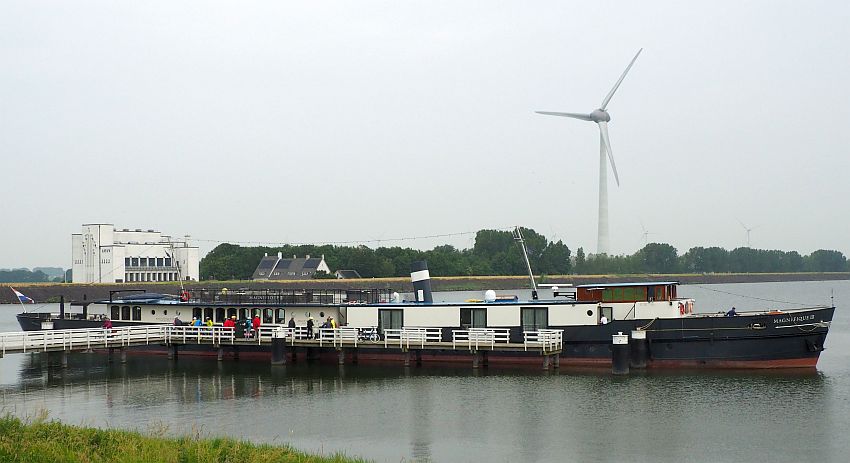
The Magnifique III, unlike most of the boats used for standard tours, was built for this purpose. It is a long, sleek boat, with a large, light-filled dining and lounge area. Two sundecks – at the back of the boat and on the roof – offer plenty of space. There’s even a jacuzzi on the roof sundeck.
What are the cabins like?
The cabins on the Magnifique III, while on the small side by hotel standards, are distinctly larger than on the standard ships. The décor is also more upscale: a chic dark brown and white look that works well in such a small space.
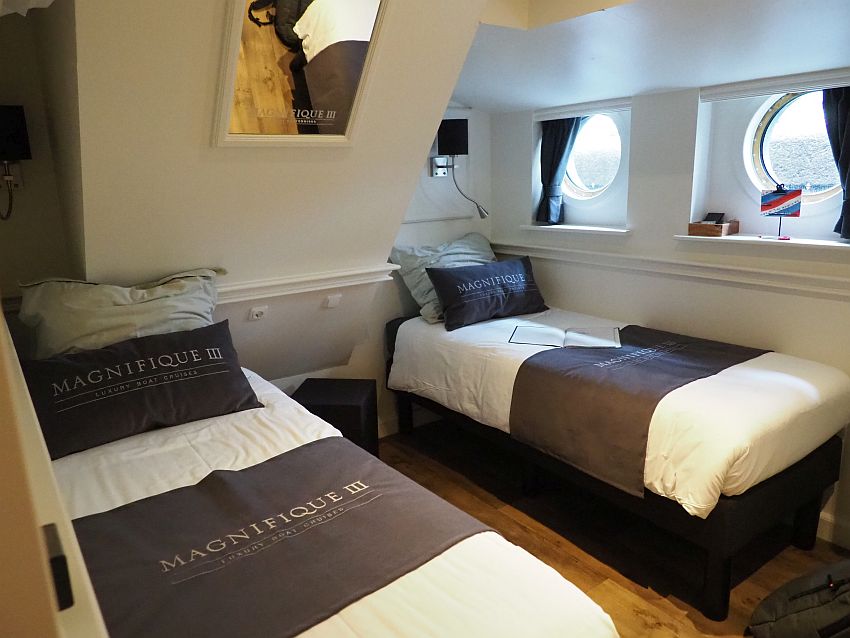
The ensuite bathroom was also a bit larger and newer-looking than in the Nassau. Basic toiletries (hand soap, shampoo and conditioner) come from Rituals. Storage space on both boats is very limited: just a small closet with shelves and some space for suitcases under the beds. This leads to my first bit of advice: pack small!
The Magnifique III also has some pricier rooms upstairs. Unlike our cabin below, which had two portholes that could not be opened, these “suites” have bigger, openable windows and a couple of chairs. They book up a year in advance, I’m told. The suites, by the way, are wheelchair accessible. The cabins downstairs can only be reached down some quite steep stairs.
Is the service on a Boat Bike Tour good?
The service on the Magnifique III impressed me. This is not to say that the service on the standard-level tour was bad; it wasn’t. But on the Magnifique III they were cheerful and eager to please in a five-star hotel kind of way. They learned our names within the first day, and knew very quickly, for example, what I liked to drink or what I definitely didn’t want for breakfast. Since the premium ships carry fewer passengers, the service can be more personal.
How is the food on a Boat Bike Tour?
I didn’t see much difference in the quality of the food between the standard and the premium ship. It was quite good in both cases.
In both ships, breakfasts are pretty basic, in a typical Dutch way: cold cuts, sliced cheese, an assortment of breads, and a few different spreads to put on bread. Of course, there was ample coffee and tea, as well as orange juice and fruit.
Lunches are the same as breakfast, and guests are expected to make and pack their own sandwiches to take with them on the day’s ride. Even guests who decide to stay on the boat and skip the day’s cycling need to pack their lunch.
Pre-pandemic, the breakfast was served as a buffet. On this trip, two “hostesses” served us at the table, refilling as necessary.
Dinners are generally three courses: starter, main and dessert. The chef on the Nassau did some excellent main courses. On the Magnifique III the chef particularly shone on desserts. The post-pandemic rule is to serve dinner in two shifts, but since the boat was less than half full we all got our dinners at the same time.
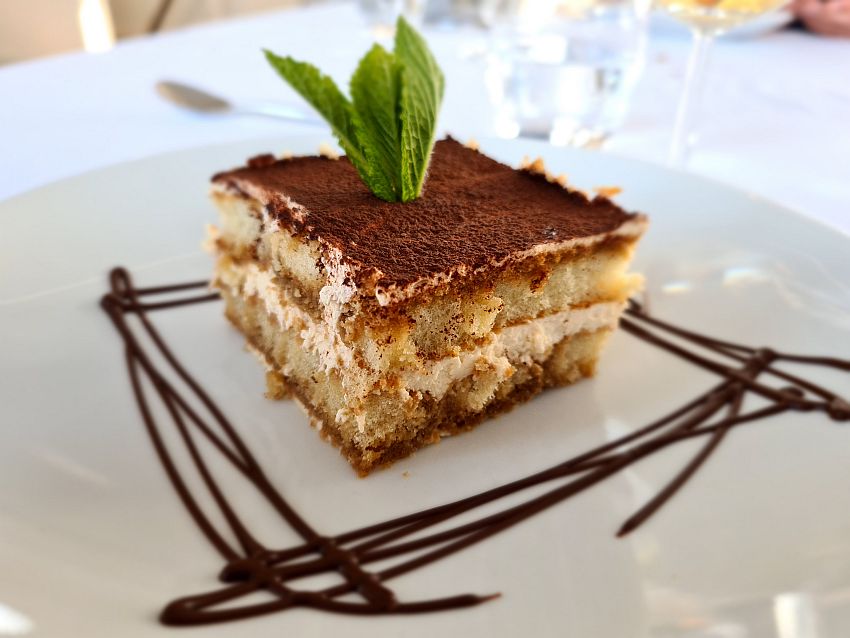
What does the tour leader do?
Each trip has at least one tour leader. On a premium tour that is full, two tour leaders would accompany the trip. On both my earlier trip and this one, we had one tour leader.
Tour leaders generally make themselves useful, answering questions, chatting with guests and so on. In both tours I’ve taken, the tour leaders spoke Dutch, German and English. I was impressed in both cases with the tour leaders’ ability to know when I wanted a chat and when I wanted to be left alone. Their job is akin to a cruise director, but with less of an obligation to keep everyone entertained.
How are the bike rides organized?
The company runs three kinds of tours: fully guided, semi-guided and independent.
No matter which of the three you’ve signed up for, almost every day there is a choice between a short route and a long route. Actually, there’s no obligation to take any prescribed route; as long as you get to wherever the boat is moored before it moves to the next location, you’re fine.
For all three kinds of tours, the tour leader informs the guests every evening about the next day’s routes both in the form of a presentation and on paper. Bicyclists can follow the route using the fietsknooppuntensysteem (bicycle junction system) or by using an app, which gives verbal instructions as you ride.
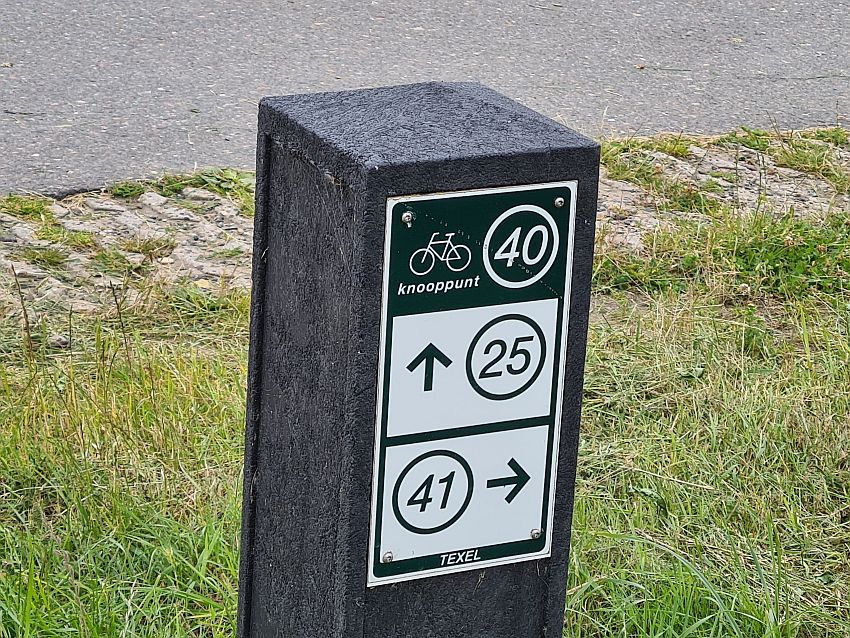
Fully-guided tours
These are just what they sound like: a tour leader takes the guests along the route, stopping at points of interest and generally taking care of everything along the way. For anyone who feels uncomfortable with following a route in a foreign country, this is the best option. It’s pretty care-free. If you start feeling more confident, you can always ditch the guided tour and set off on your own – though you should let the tour leader know if you’re going to do so! From what I’ve heard, the guided tours create a great sense of camaraderie among the participants, and many of them form lasting friendships over the course of the week.
On the premium tours, like the ones the Magnifique III usually does, two tour leaders come along. One guides the shorter route and one guides the longer.
Semi-guided tours
In this incarnation, tour leaders follow the route, but don’t lead. They’re available by phone, and because they’re traveling the route as well, they can get to you relatively quickly if need be: if you have a flat tire or whatever.
Both the tour I took on the Nassau and this one fell into this category. This suited me perfectly. It was good to know the travel leader was available if I needed him, but I never did. And bicycling along with a group isn’t something I need or particularly want. I’m comfortable with cycling in the Netherlands, and I like being able to stop whenever I want for photos or a rest.
Independent tours
In this case the tour leader still tells guests the route in the evening, but then stays on the boat. That means the tour leader can only give advice at a distance if you need help. This is more suited to experienced cyclists.

What are the best things about Boat Bike Tours?
The main reason I recommend taking a Boat Bike Tour is where it takes you: sometimes it’s well-known, touristy places, but often it’s places that tourists never get to. These smaller towns and villages, away from the well-known destinations, are often just as pretty and interesting as the famous places. You get more of a feeling of a place as someplace where real people live and work, and not just for the sake of tourism.
The other main selling point, to me, is that it’s an active vacation. I normally would never bicycle this much, but the scenery we passed through gave me the incentive to do it. Yet in many ways it was easy: the “floating hotel” aspect meant I could unpack and leave my belongings in place for a whole week. I could follow the pre-set route if I wanted, or stray from it, as my mood took me. The ebike I rode was in perfect condition on both trips, and I didn’t have to cook dinner at the end of the day. It’s a great combination of being active and being pampered.
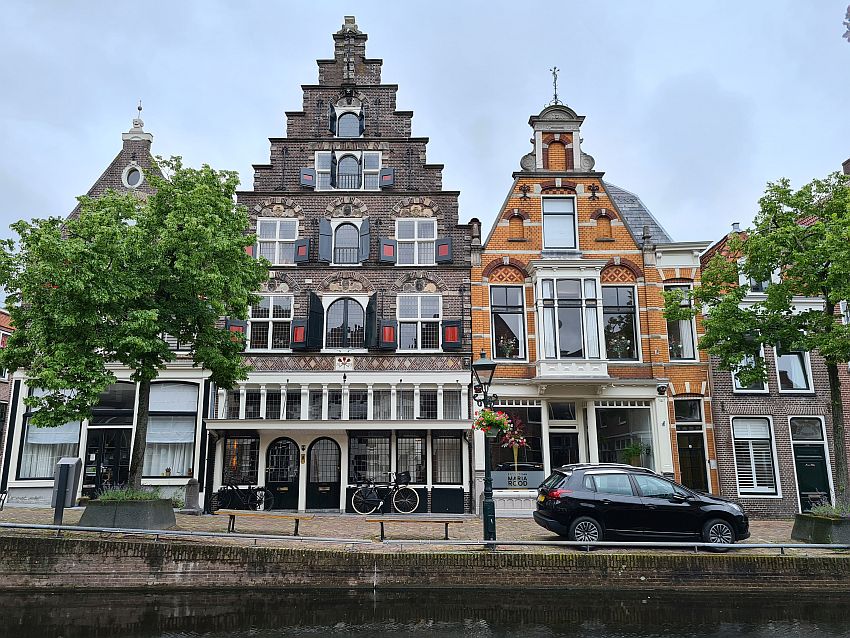
Are there any negative points?
Since it was one of the first post-pandemic trips, and because the Americans, Brits and Australians who like this sort of tour couldn’t yet travel to the Netherlands, the rest of the guests were Germans with extremely limited English. This made my week on the Magnifique III much less social than my week on the Nassau, where I got to know a tableful of English-speakers. This was not the company’s fault, of course, and I assume that the clientele will be more diverse as travel more fully opens up, especially in the 2022 season.
Another negative was about me specifically and applies to both the tours I’ve taken: I’m not fit for this amount of biking. I was probably the youngest passenger on this recent trip, but clearly the least fit too! I had an ebike, thank goodness, both times, and that made the distances quite doable. Riding an ebike is like always having the wind at your back, and it made all the difference. It meant that, while I was being physically active, I didn’t get out of breath much.
However, my butt hurt! I’m not used to sitting on a bike for that many hours in a day. I did wear bike shorts, which add a layer of padding, but still, it ended up hurting. I stuck with the shorter routes, which varied from about 25 to 40 kilometers (15-25 miles). The long routes are more like 50-55 kilometers (31-34 miles).
Other than the language gap among the passengers and my own lack of fitness, I can’t think of any more negative points. The Magnifique III was a treat in every respect. Did I mention that it has a jacuzzi? I think I was the only person on board who had remembered to bring a bathing suit. There was something really special about soaking in that jacuzzi as we cruised out of a town or drifted on the Ijsselmeer.
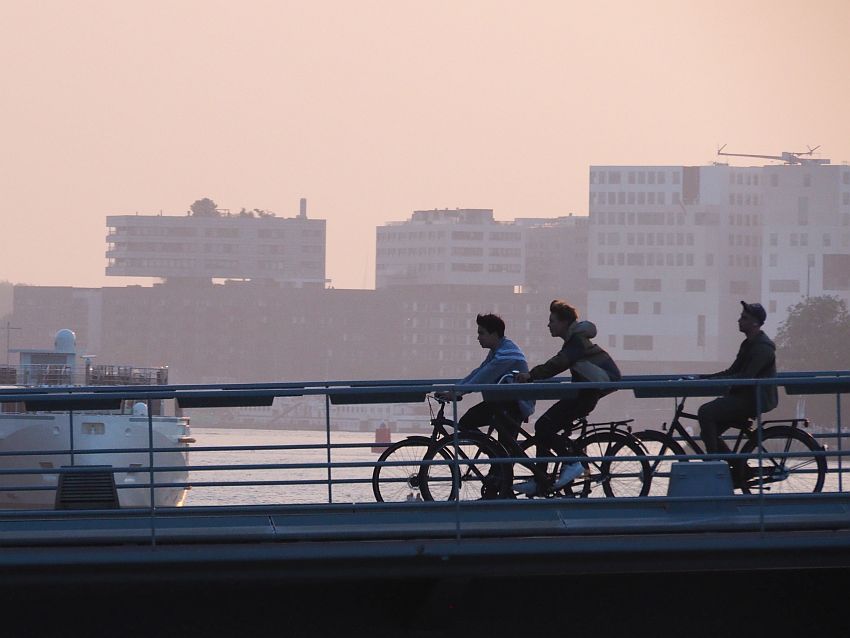
What Covid measures are in place?
The company has a set protocol that applies on all of their ships. This includes things like one-way movement in the hallways, marked with arrows so people don’t have to pass each other too closely. Right at the gangway as we boarded the boat, there was a stand with disinfectant.
The crew told us as we boarded that we only needed to wear a mask on board when we couldn’t avoid being within 1.5 meters of another passenger. With so few passengers, this never happened.
Dinners on a full boat will be served in shifts so no one has to sit too near to anyone else. Ours was less than half-full so there was plenty of room to feed us all at the same time and still maintain distance. The servers and bartender wore a mask the whole time they were serving. I also noticed that they wiped down shared items with disinfectant; things like the salt and pepper shakers.

When we took this tour, I had a cough. Albert had brought a cold home the week before – from where, I don’t know, and we are aware that it means he wasn’t careful with distancing and/or mask use. He took the PCR test and it wasn’t Covid. He was over it in a few days and then I came down with it.
On the first couple days on the Magnifique III I had an allergy attack – I guess I’m just not used to the countryside’s plant life – so I was sneezing, coughing and itching a lot. Once I started taking antihistamines the allergy symptoms subsided, but the cough stayed.
This is a pattern for me. After I have a cold, the cough can linger for weeks and even months. So that’s what this felt like. At the same time, I knew that it was also a symptom of Covid.
I eventually sent Albert to ask the crew for a Covid test; I would guess this was the second or third evening. They had one available and it turned out negative.
It made me think, though. Because there was no requirement for us to be PCR-tested or vaccinated before getting on the cruise, we could have brought Covid on board. At the same time, I felt oddly reluctant to request the test. If I had to quit the tour it would be no more than an inconvenience to me, but I didn’t want Albert to have to stop early. What if this trip had been something I’d spent a lot of money to fly to, plus the cost of the tour itself? Would I want to take the risk of being put off the boat if I tested positive?
It seems to me that not requiring a PCR test or vaccination is a disincentive for passengers to be honest about their symptoms. And that could easily lead to outbreaks. This would be true on any cruise or any group tour of any sort.
On the other hand, people coming to Europe by plane would have to pass a PCR test to fly or else be vaccinated, and some countries require a test to enter, so perhaps it’s not really a problem. While I didn’t ask, I would guess that all or most of the other passengers and crew on the trip were fully vaccinated. And presumably, as the vaccination rate goes up, the issue will disappear. I suspect that by the next season, which starts with the tulip tours in April 2022, it won’t be a problem at all.
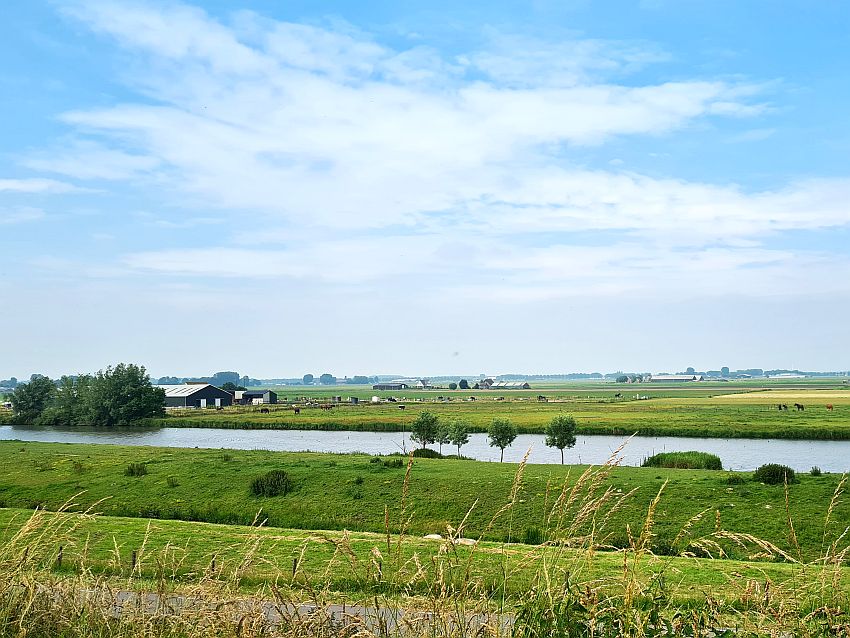
Tips for your Boat Bike Tour
- Bring padded bike shorts if you don’t normally bicycle a lot. You don’t need any other specialized biking clothing. The bikes are the sort where you sit up straight and they’re intended for paved roads and not for racing. You can, if you prefer, bring your own bike along instead of renting one of theirs.
- If your tour is wholly in the Netherlands, you don’t have to wear a helmet by law, but you should think about using one anyway. Bring one or rent one on board if you’re going to use an ebike or feel at all unsure.
- Don’t reserve an ebike if you’re not quite comfortable with biking in general. They’re heavier than regular bikes. Inexperienced cyclists find them hard to handle, which can be dangerous, especially in a guided group.
- Bring sun lotion. You may not feel it because of the breeze or because it’s cloudy, but you’ll likely need it.
- Wear layers, including a rain jacket. Once you’re moving, you’ll warm up and probably need to shed a layer or two. The company provides panniers that attach easily to the bike, so you’ll have a place to put the shed layers.
- Don’t rush. Usually you have all day to get to where the boat is moored, and there’s plenty to see. Stop and do some birdwatching or visit a museum or just sit in a sidewalk café.
- Don’t feel obliged to ride the whole route. You can always make up your own route if there’s something else you want to see. One day, feeling tired and also feeling my sore butt, I took my ebike on the train to a town about halfway along the short route, then rode just half the route that day. That’s okay.
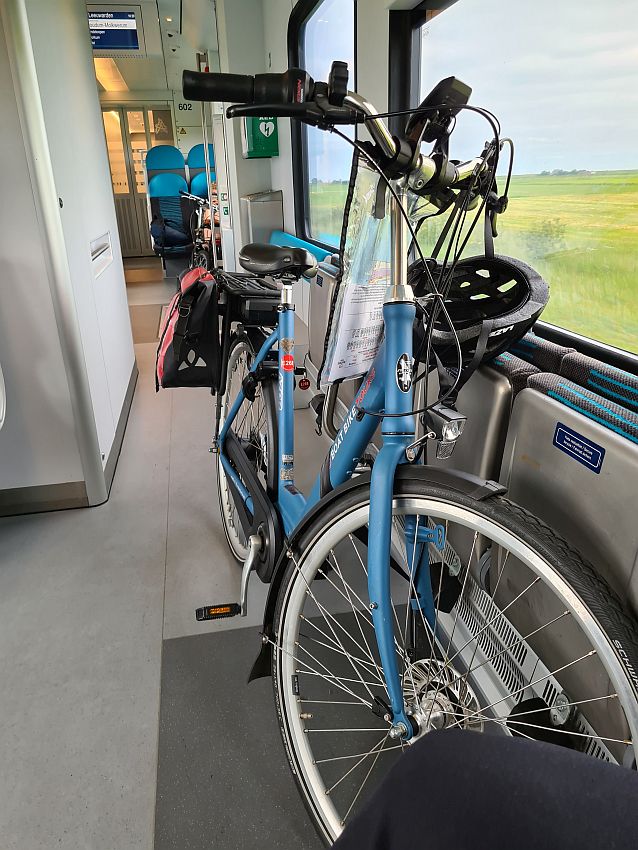
- It’s also okay not to ride at all. Twice on the Nassau trip and once on the Magnifique trip I decided not to ride because the weather was rainy. I hate biking in the rain. This isn’t a cruise: there’s no entertainment. But that’s what I liked: just sitting, looking out the window as we motored quietly along. There’s a wonderful restfulness to that.
- If you’ve chosen a premium trip, check the Boat Bike Tours website to see if the boat has a jacuzzi. If so, bring a bathing suit. Even on a non-premium tour you might find opportunities to swim in lakes or river or the sea, so bring one along, just in case.
- As I mentioned above, pack light. And I repeat: this is not a cruise. There is no dress code of any sort, so it’s perfectly okay to wear ordinary clothing you’d wear at home, including at dinner.
When you should not take a Boat Bike Tour
- Don’t go if you expect entertainment. There isn’t any, unless you count the TV, which is only in some premium ships. There’s no spa or casino or even shuffleboard. On the Nassau, a guitarist came on board one evening to perform. Because of Covid, even that one musical evening didn’t happen on the Magnifique III. Most evenings your entertainment, unless you go off-ship, is a quiet drink and pleasant conversation in the lounge. Some passengers play cards after dinner.
- If you expect elegant soirees with semi-formal outfits and dancing, you’ll be disappointed. On the other hand, if you want to go clubbing, you might be able to find a place in some of the port towns.
- Don’t go if you want to be able to order food from a menu. The dinners have a set menu and set amounts. If you let them know ahead of time about any particular dietary limitations, they’ll accommodate you, but you won’t have any choices of entrees each evening. Of course, you’re free to eat out for lunch or dinner if you want, but the price of the trip includes breakfast, lunch and dinner.
- If you want to sleep in late each morning, this kind of travel isn’t for you. The boat usually moves on once people get off the boat after breakfast.
While bicycling isn’t particularly my thing, I appreciate the Boat Bike Tours formula because of the combination of floating hotel (no shlepping your luggage!) and getting to see truly off-the-beaten-path places. For any reasonably active traveler of any age, I’d highly recommend it.


